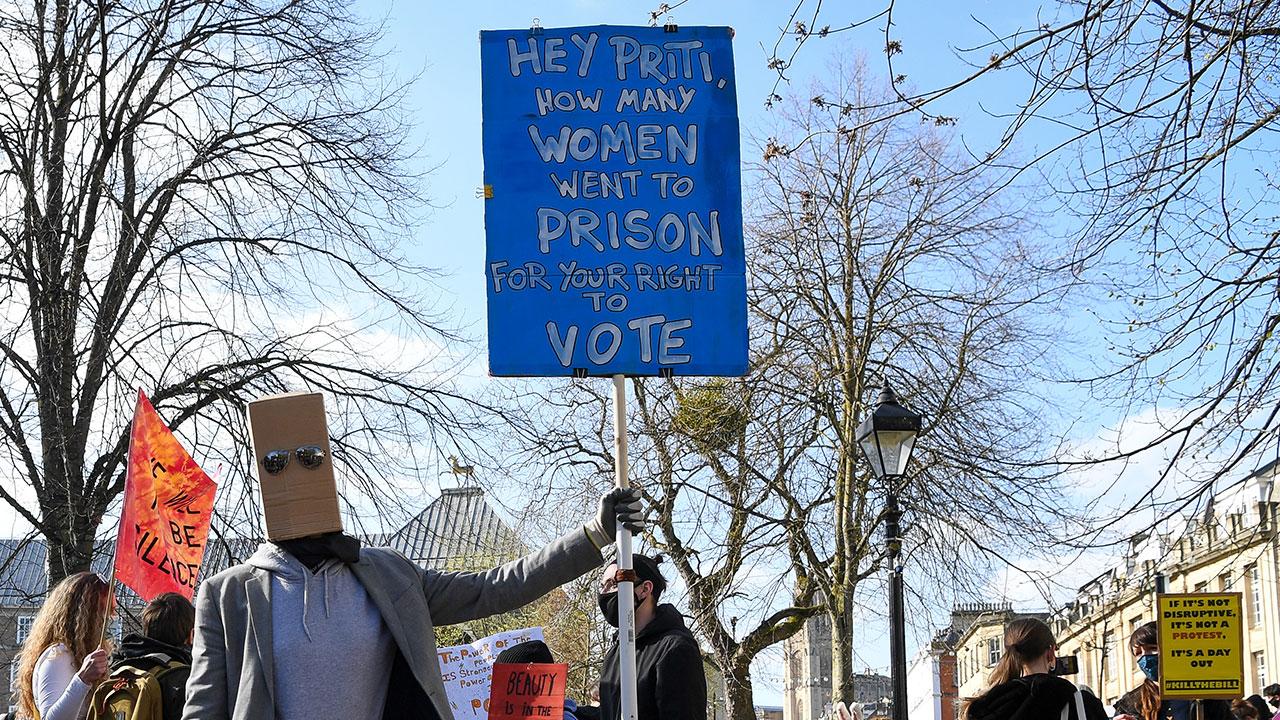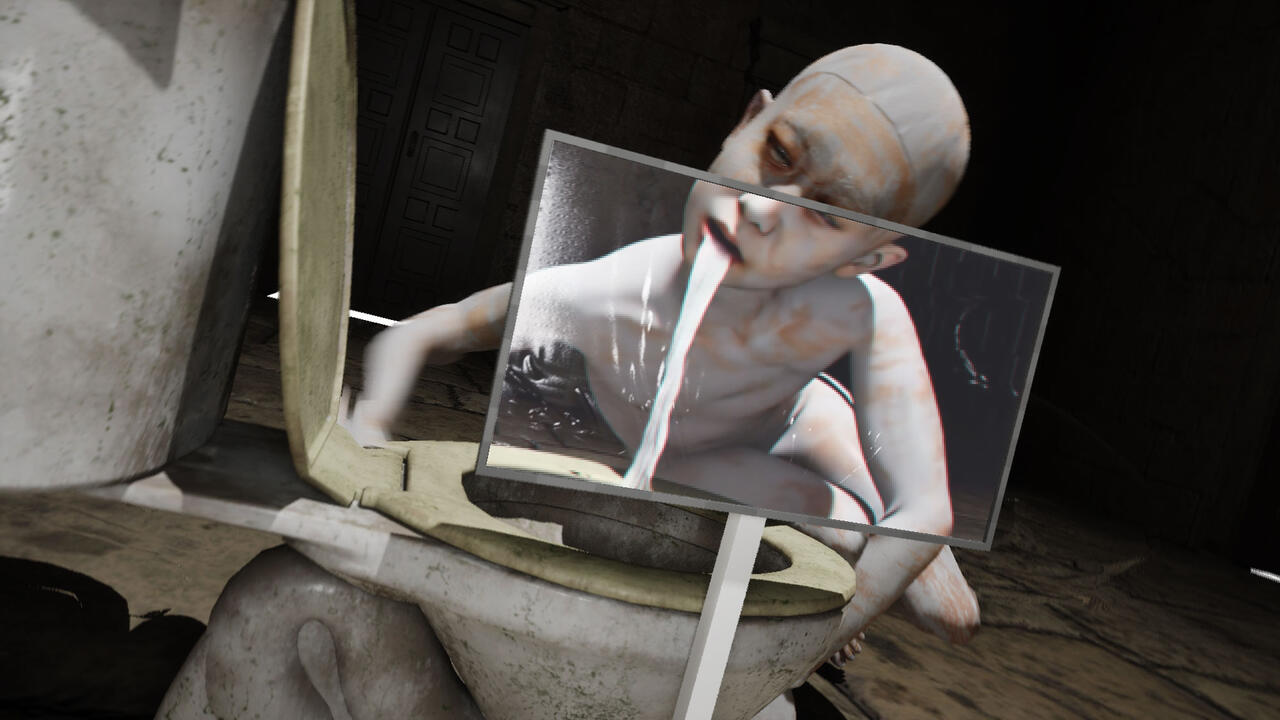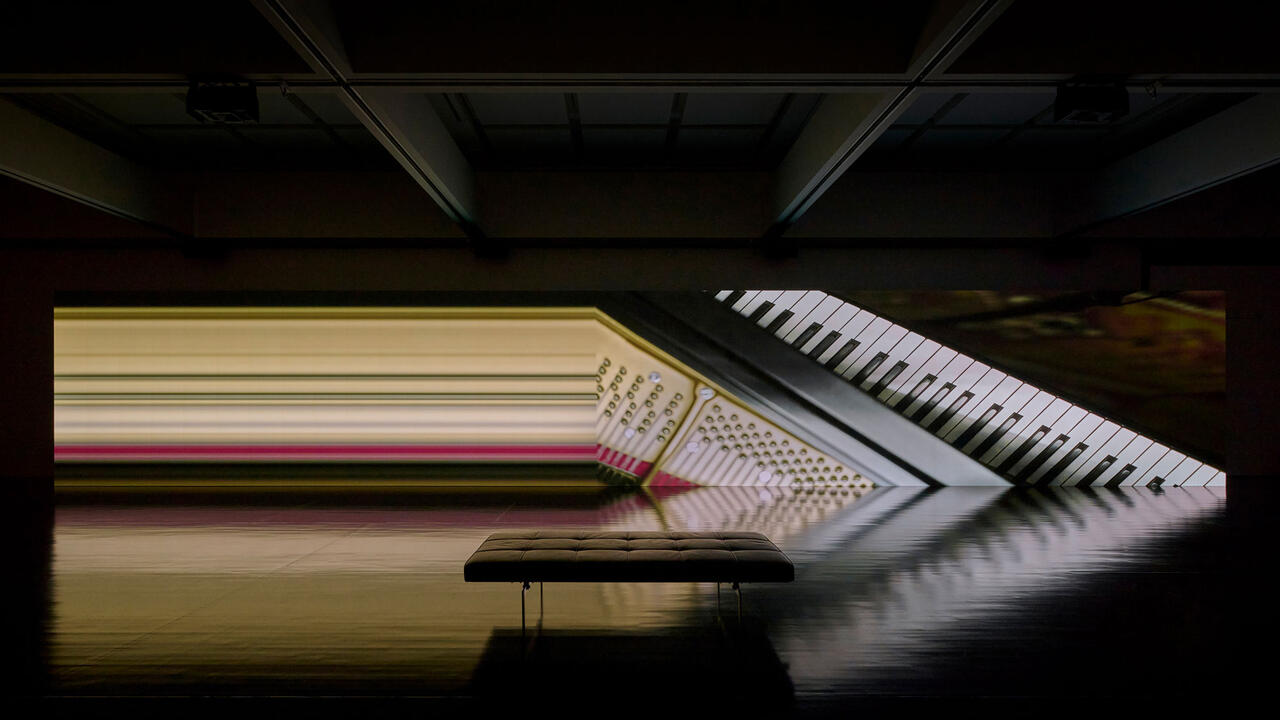A Stitch in Time
The enduring symbolism of a sewn mouth, from the works of David Wojnarowicz to recent protests by refugees
The enduring symbolism of a sewn mouth, from the works of David Wojnarowicz to recent protests by refugees

The light’s behind them. Four men, somewhere on the border between Greece and Macedonia. They can’t go forward, can’t go back. The man on the left has his eyes closed. He’s unshaven, a single freckle on his temple. The light is tangling in his hair, running down his forehead and catching on his chin. Head bowed, careful as a surgeon, the man opposite him is sewing up his mouth. The blue thread runs from lip to hand. The sewn man’s face is absolutely still, upturned to the sun.
I don’t know where I first saw this photograph. Maybe it washed up on my Twitter feed. Later, I searched for it again, typing ‘refugee lip sewing’ into Google. This time, there were dozens of images, almost all of men, lips sewn shut with blue and scarlet thread. Afghan refugee, Athens. Australian immigration centre in Papua New Guinea. Stuck on the Balkan borders, a first smattering of snow.
The mouth is for speaking. But how do you speak if no one’s listening, if your voice is prohibited or no one understands your tongue? You make a migrant image, an image that can travel where you cannot. An Afghan boy who spent three years at the beginning of the millennium on Nauru – the off-shore processing camp for refugees attempting to reach Australia – told the website Solidarity.net.au: ‘My brother didn’t sew his lips but he was part of the hunger strike. He became unconscious and was sent to the hospital. Every time someone became unconscious we would send a picture to the media.’
The first time I encountered lip sewing as protest was in Rosa von Praunheim’s extraordinary 1990 AIDS documentary, Silence = Death. One of the interviewees was the artist and activist David Wojnarowicz. A former street kid, a gay man who had recently been diagnosed with AIDS, he talked with great eloquence and fury about the different kinds of silence ranged against him. He spoke of what it had been like to grow up queer; the need to keep his sexuality secret because of the omnipresent threat of violence. He spoke of the silence of politicians, whose refusal to confront AIDS was hastening his own oncoming death. And, as he talked, footage he’d collaged together appeared on screen: a kaleidoscope of distress, which was later given the title A Fire in My Belly (1986–87). Ants crawl over a crucifix; a puppet dances on its strings; money pours from bandaged hands; a mouth is sewn shut, blood trickling from puncture wounds.
What is the stitched mouth doing? If silence equals death, the biting slogan of AIDS activists, then part of the work of resistance is to make visible the people who are being silenced. Carefully, carefully, the needle works through skin, self-inflicted damage announcing larger harm. ‘I think what I really fear about death is the silencing of my voice,’ Wojnarowicz says. ‘I feel this incredible pressure to leave something of myself behind.’
You make an image to communicate what is unsayable in words. You make an image to go on beyond you, to speak when you no longer can. The image can survive its creator’s death, but that doesn’t mean it is immune to the same forces of silencing that it protests. In 2010, nearly two decades after Wojnarowicz died of AIDS at the age of 37, A Fire in My Belly was removed from a landmark exhibition of gay art at the Smithsonian, in Washington DC, following complaints from right-wing politicians and the Catholic League. This time, the stitched mouth became a symbol of censorship. At protests, people held up posters of Wojnarowicz’s face, lantern-jawed, implacable, five stitches locking shut his lips.
Both images are in front of me now: stitches in time, reporting from the past. Wojnarowicz is dead; God knows where the man on the Greek border is. In other photos from the same protest, men sit or stand on train tracks, holding hand-lettered signs on scraps of dirty cardboard: ONLY FREEDOM and OPEN THE BORDER. They are bare-chested, wrapped in blankets, ranked against police with riot shields and bulletproof vests. The word ‘stitch’ is a double-edged prayer. It means the least bit of anything – the stigmatized, say, or the devalued. And it means to join together, mend or fasten, a hope powerful enough to drive a needle through bare flesh.






















